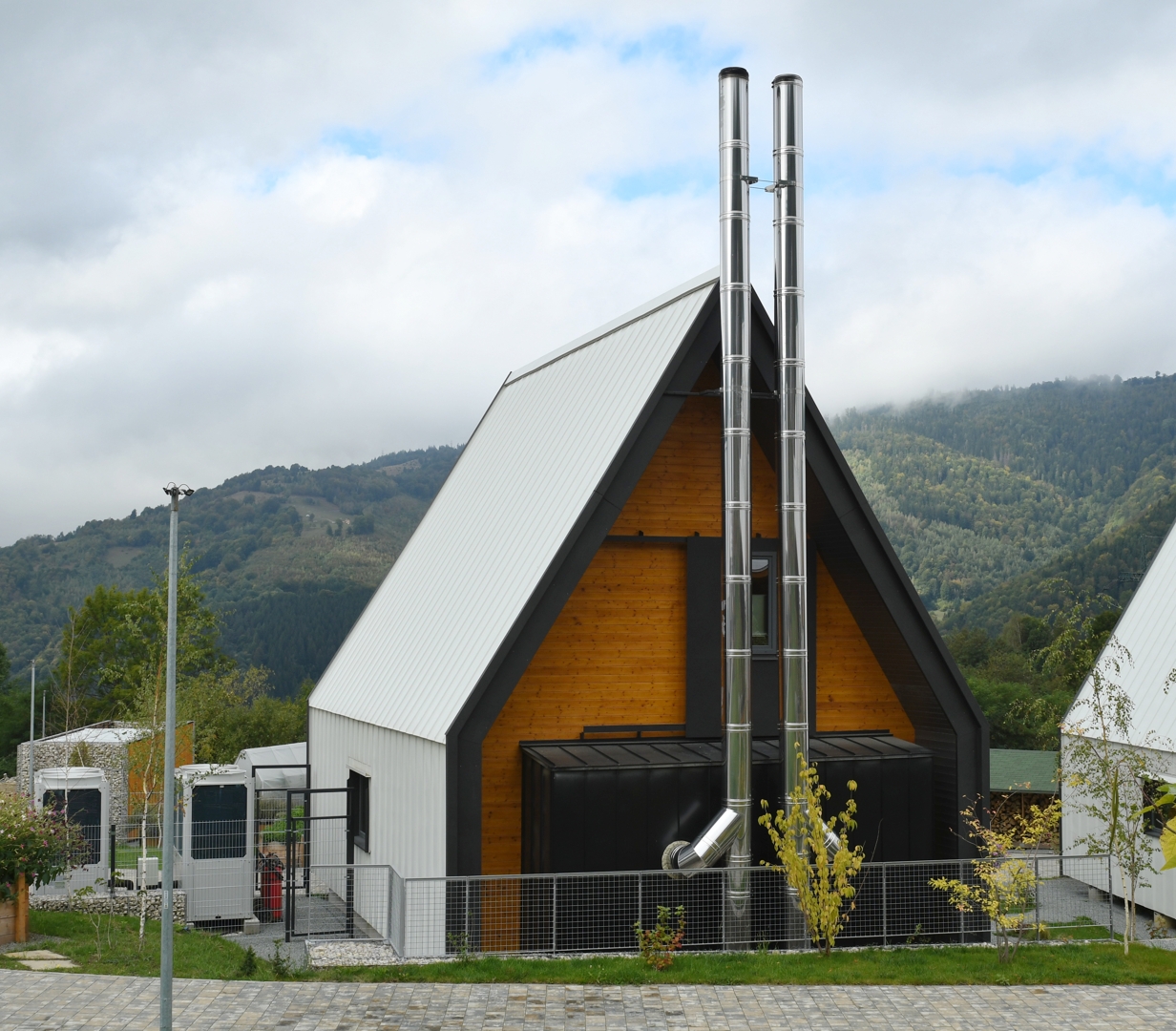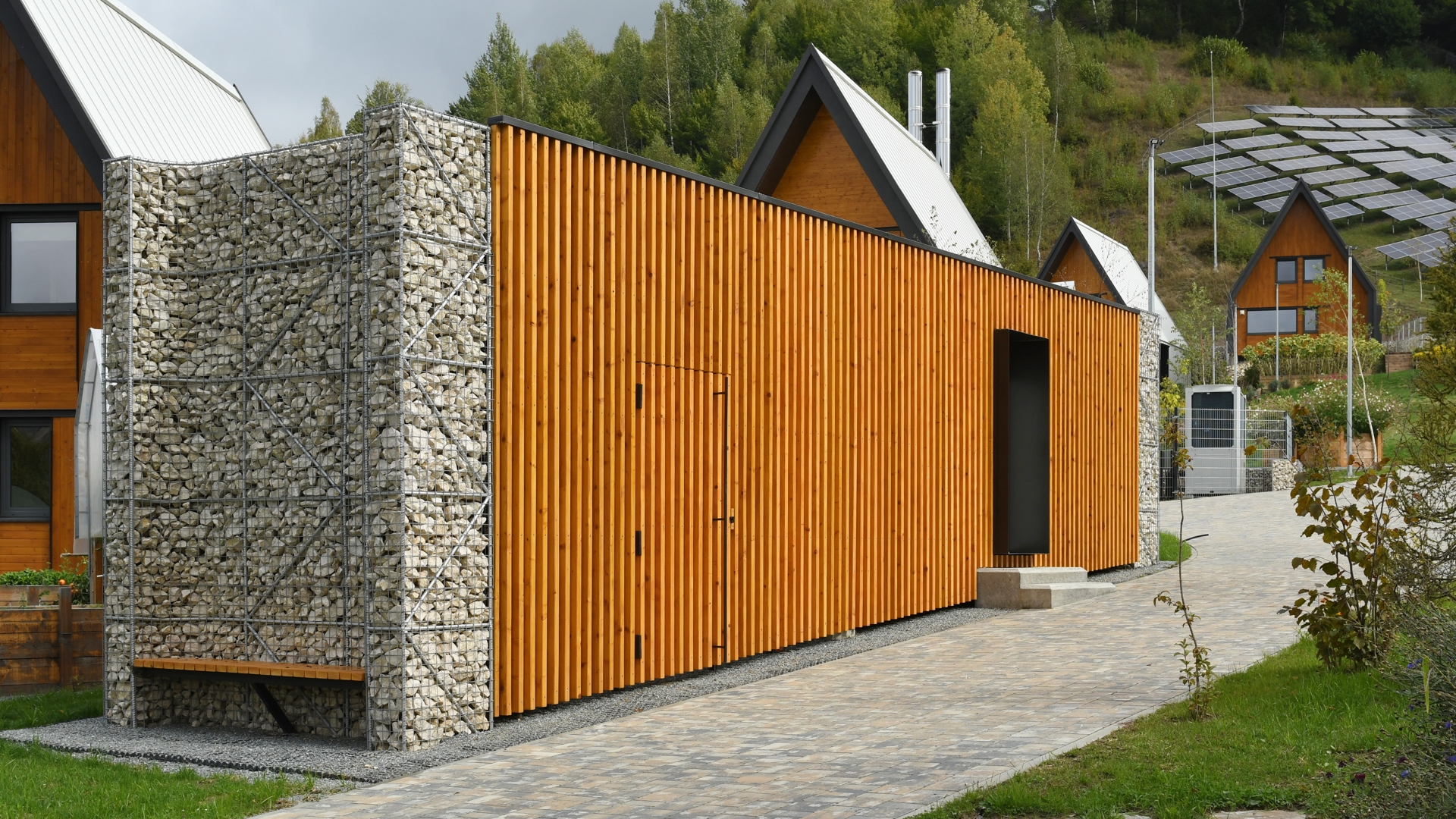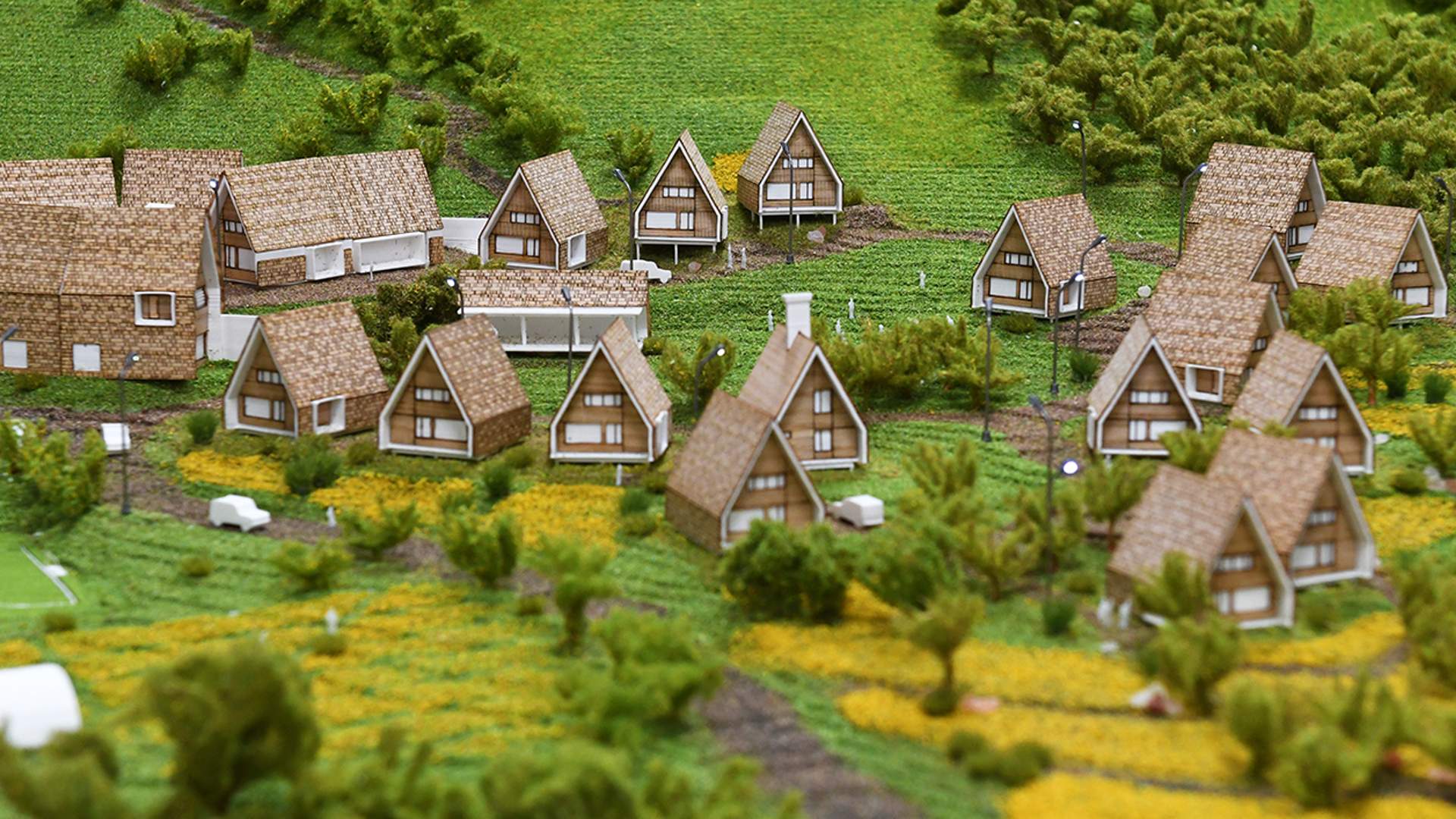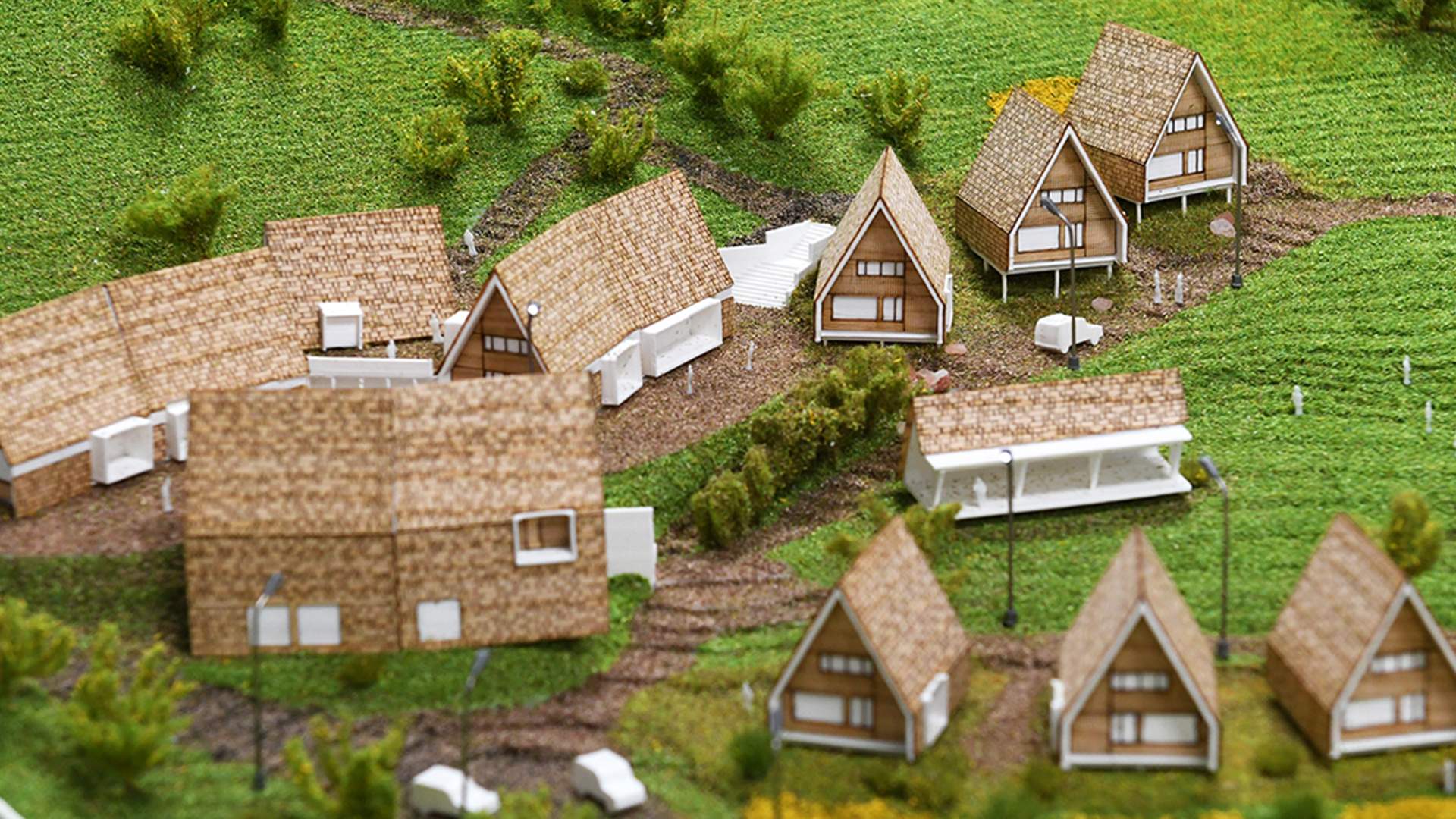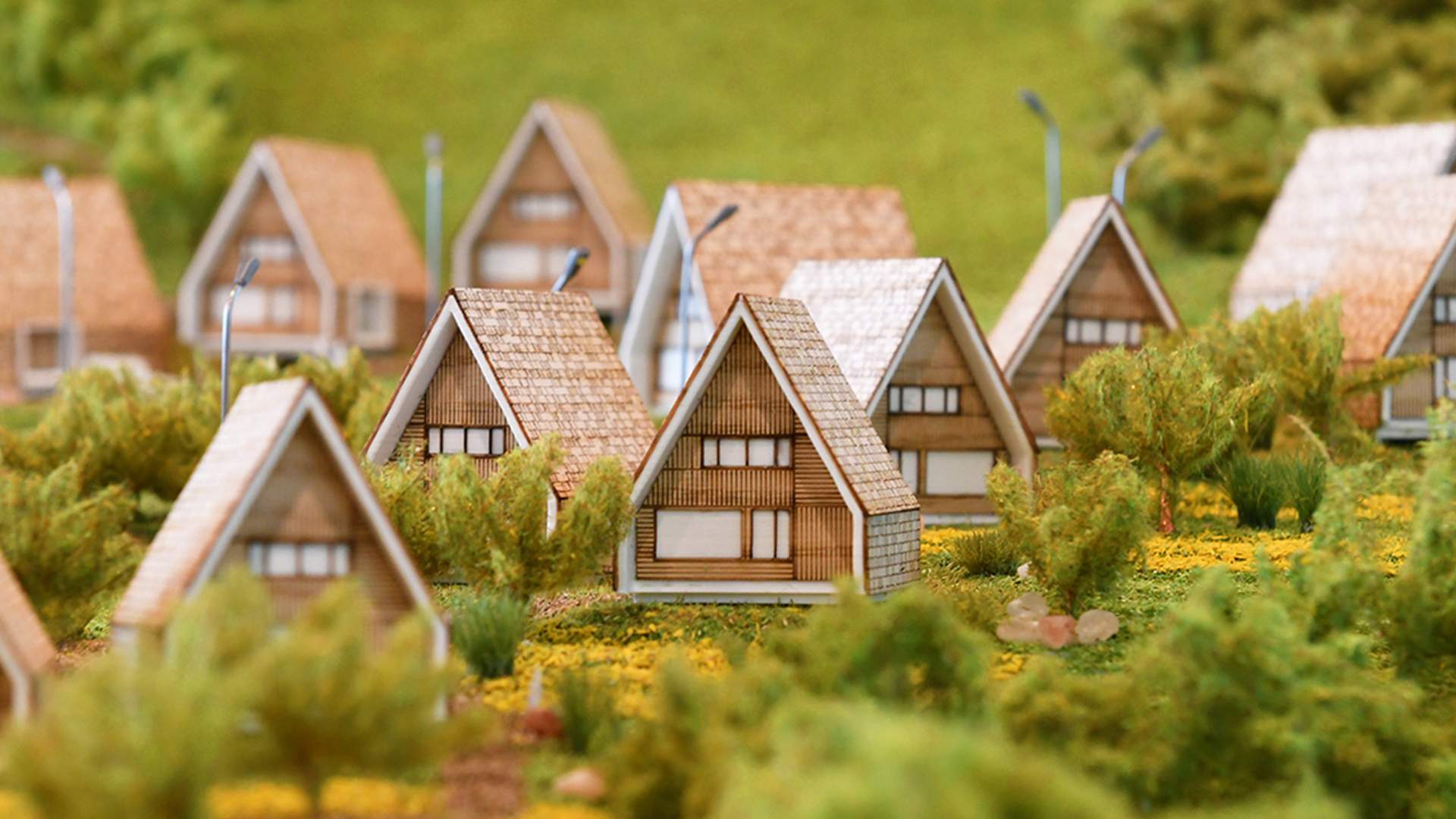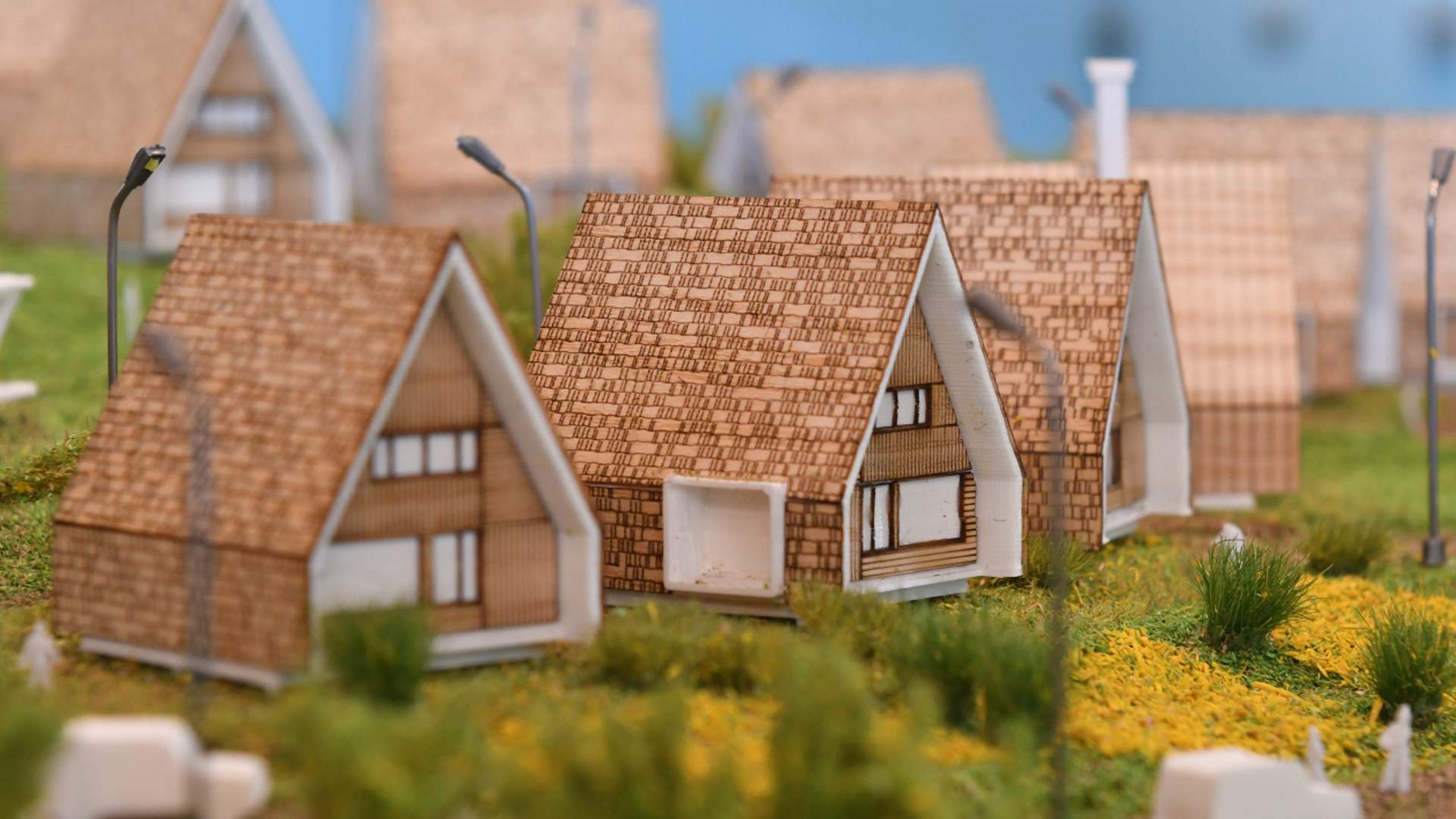This project emerged from the awareness of the large number of children in Romania (approximately 52,783) who live in foster care centers, with other families, or under the care of social workers. Over time, many of these children struggle to integrate and work in society as adults.
The architectural and landscaping concept addresses the idea of raising children within a rural micro-community, proposing a cluster of individual homes centered around a communal space that reflects the atmosphere of mountainous rural villages.
To improve their lives, these children need families that can provide an environment for growth, understanding, and safety. Living within a family, learning trades through community engagement, participating in sports, accessing education, and fostering responsibility through involvement create an environment that allows them to reach their full potential. Read more
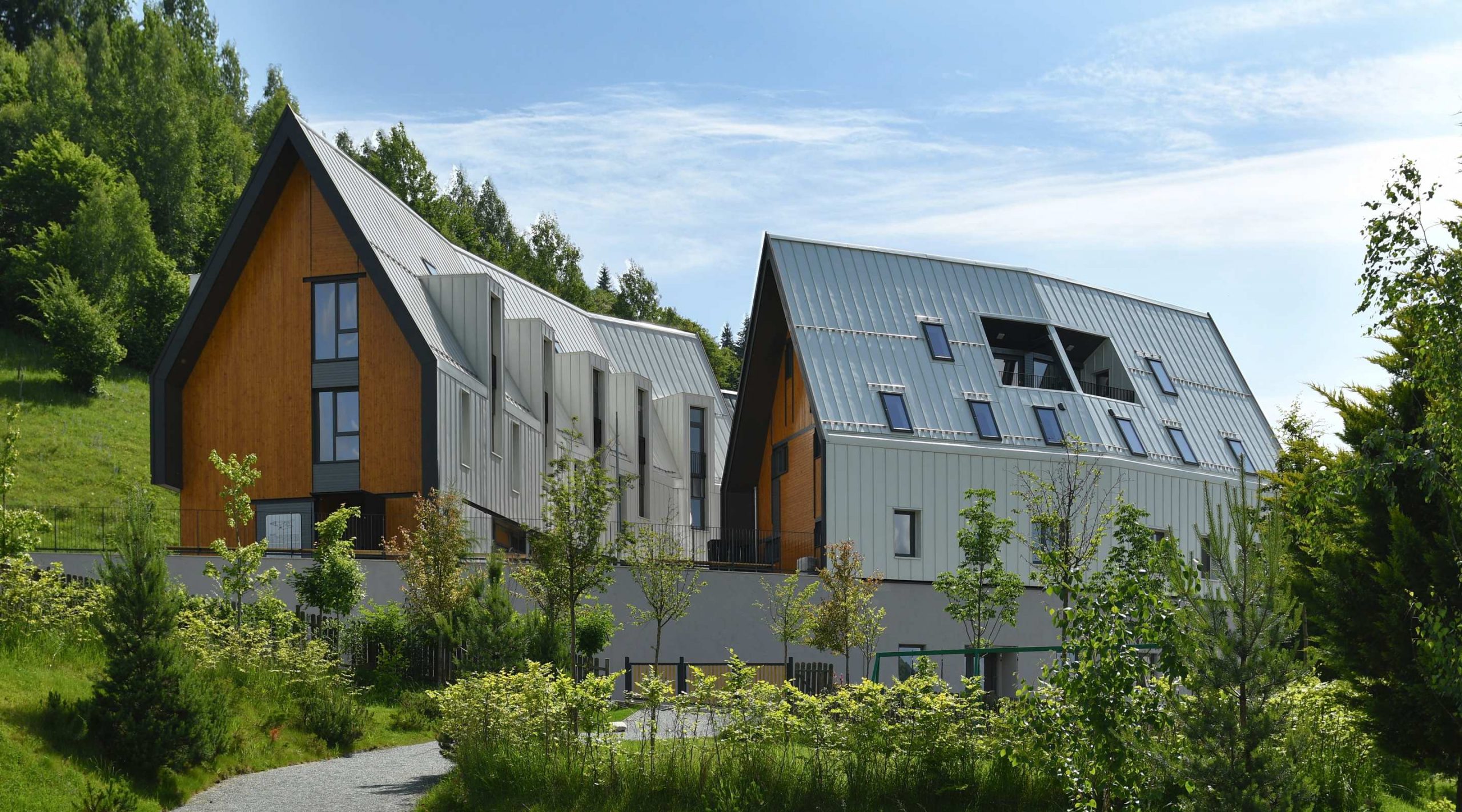
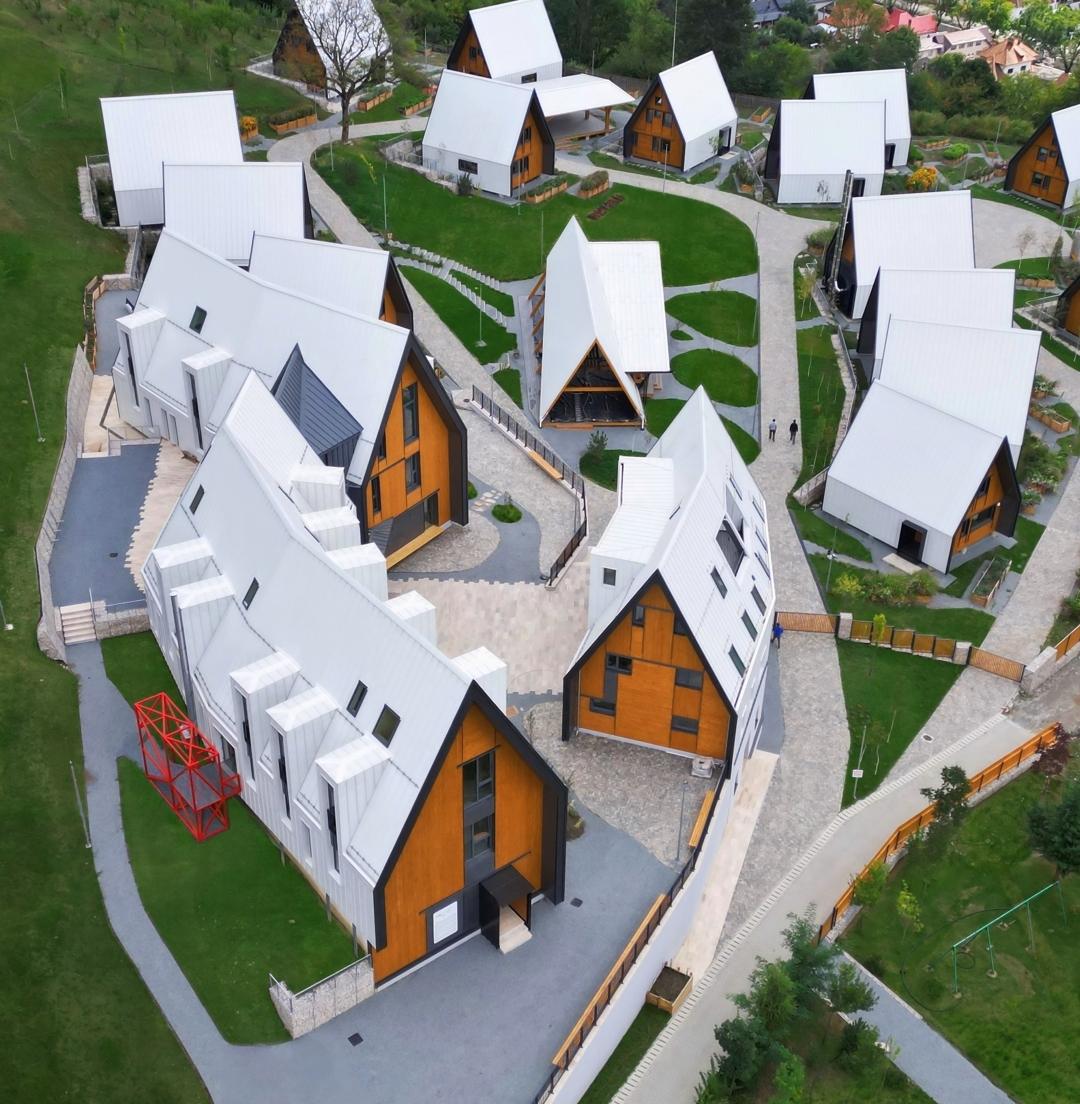
The multifunctional building serves as the main gathering center, offering a variety of functions for a large number of people, such as: a dining hall and kitchen on the ground floor, workshop rooms, meeting rooms, and employee locker rooms on the first floor, and a library and an open space for various group activities in the attic.
The multifunctional building, adjacent to the administrative building, is constructed in close proximity, forming an outdoor gathering space with seating. This space is accessible via a large external staircase located on the right side of the administrative building. On the left side, the natural slope of the land facilitates access to both buildings from access gate number one.
Beneath the platform defined by the two buildings is the food storage area, which has dual access: from the courtyard area and from the kitchen area.
The multifunctional building provides direct access from the outdoor space to both the ground floor and the first floor. The same approach was applied to the administrative building, where access to the dispensary, heating point, and food storage is directly from level -1, while access to the reception, meeting room, and apartment is from the ground floor.
Externally, several stairways are arranged to facilitate circulation around the buildings, which, due to the slope of the land, have entrances at different levels or elevations.
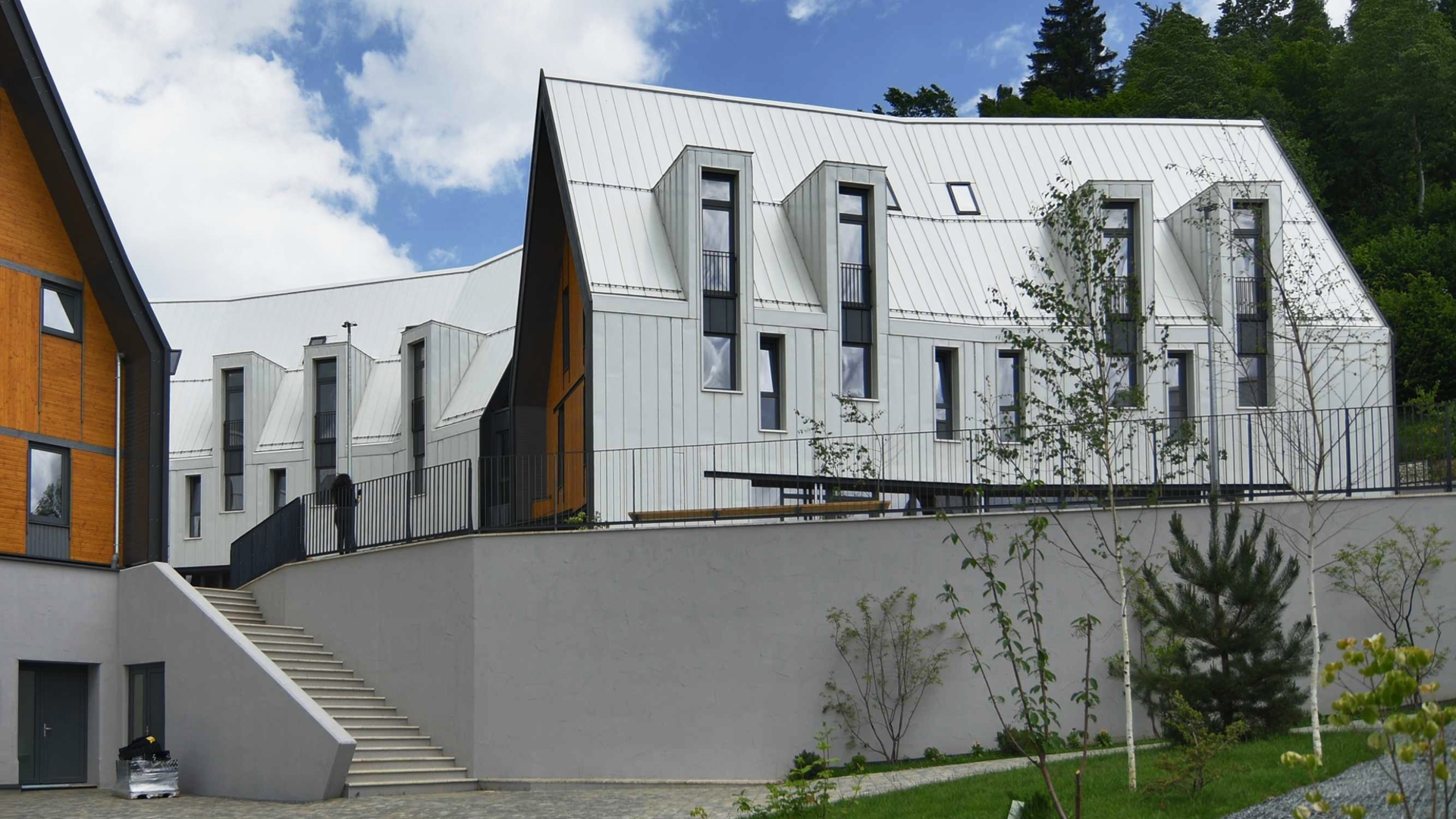
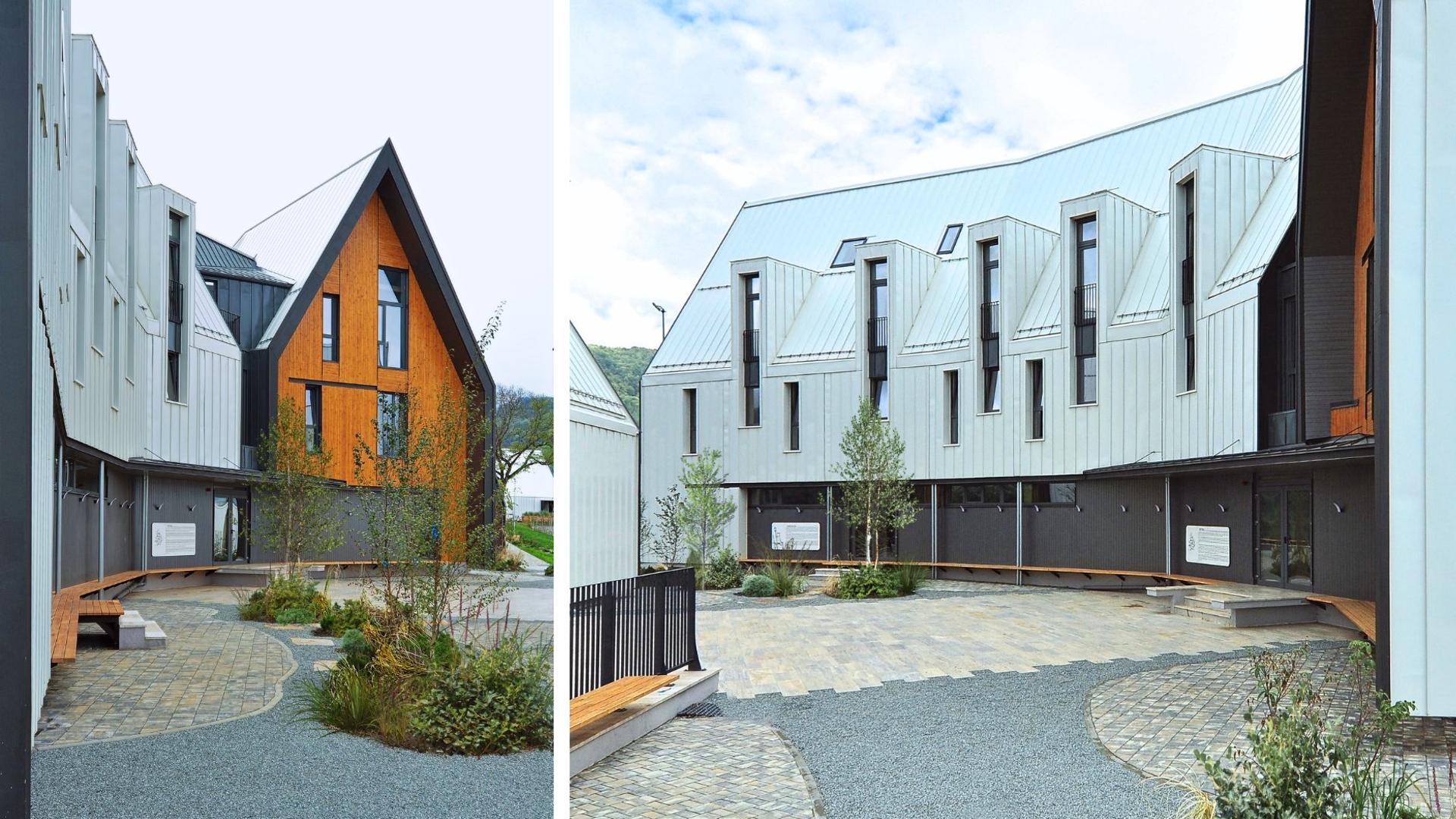
The basement is divided into individual rooms for food storage, according to the standards set by the relevant legislation, based on the type of food and the required storage temperature for different categories of products. Access to these rooms is facilitated through the dirty corridor from the supply entrance at the courtyard level and through the clean corridor from the kitchen.
The center’s kitchen is designed and equipped to ensure an optimal workflow and an efficient cooking process, tailored to the requirements of a professional space. It includes state-of-the-art equipment and a specialized design to support the preparation of a large number of portions in a short time, without compromising the quality of the dishes.
All rooms on the first floor have been designed with a unified approach, featuring a flexible concept that allows them to be adapted based on the type of activities being carried out. These spaces are designed to accommodate a variety of setups, ranging from conferences or seminars to cultural or recreational activities.
In this regard, the rooms are equipped with both fixed and movable furniture, allowing for quick customization of the layout based on the activity.
The attic is designated for multifunctional rooms and is equipped with three multimedia spaces that can accommodate functions such as meetings, film screenings, relaxation and gathering areas, as well as spaces for larger group meetings.
These spaces are organized according to their capacity and level of intimacy. The attic space is a more intimate area, designed for reading and small groups, with access provided by a spiral staircase. The intermediate space is closely connected to the attic area, allowing these spaces to communicate and be used together.
This space can be used for medium-sized groups for workshops, meetings, or gatherings for discussions. The Main Hall is located in the left section of the building and is the largest activity room in the entire complex. It is designed for a large number of people and can be used for parties, conferences, or even film screenings.
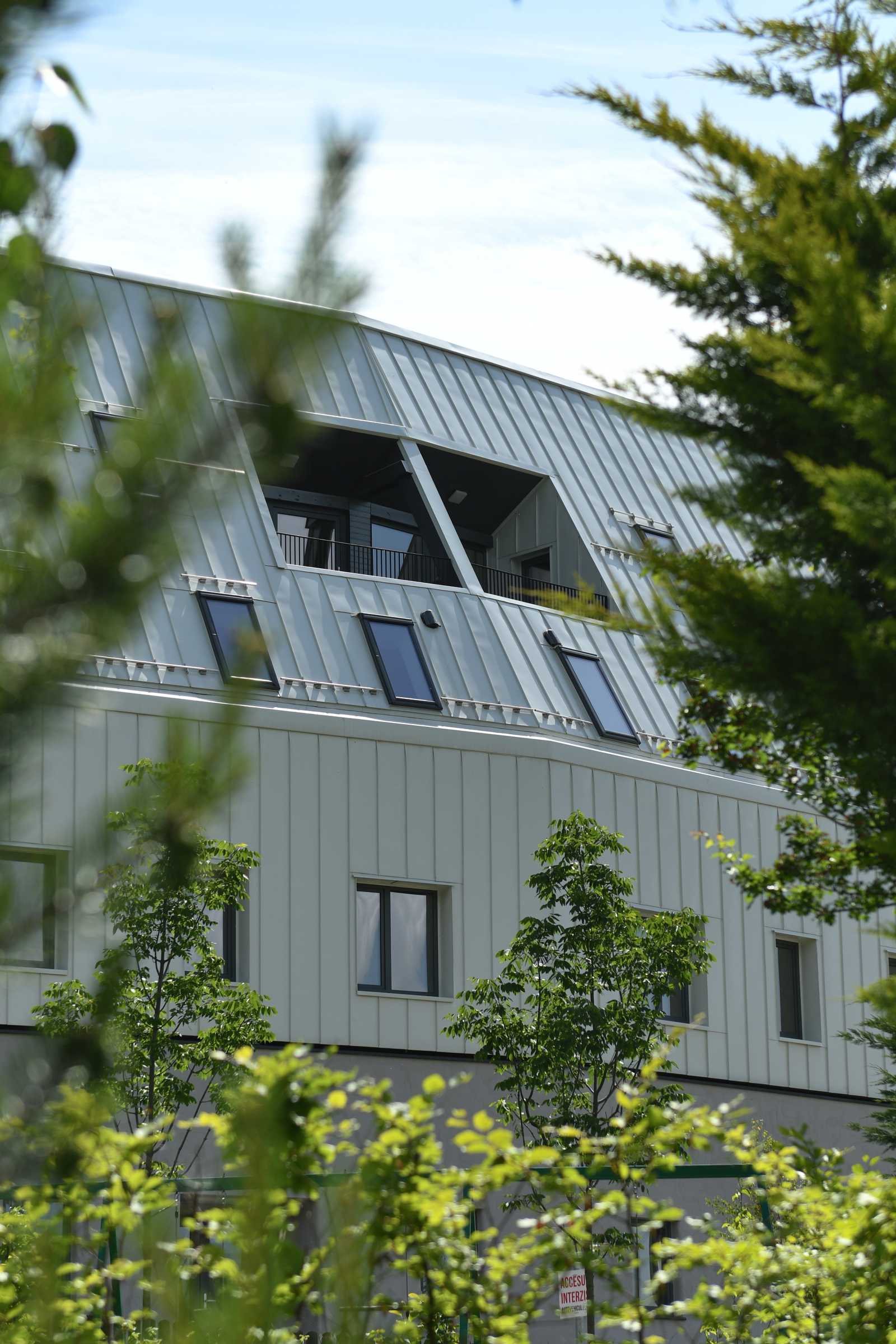
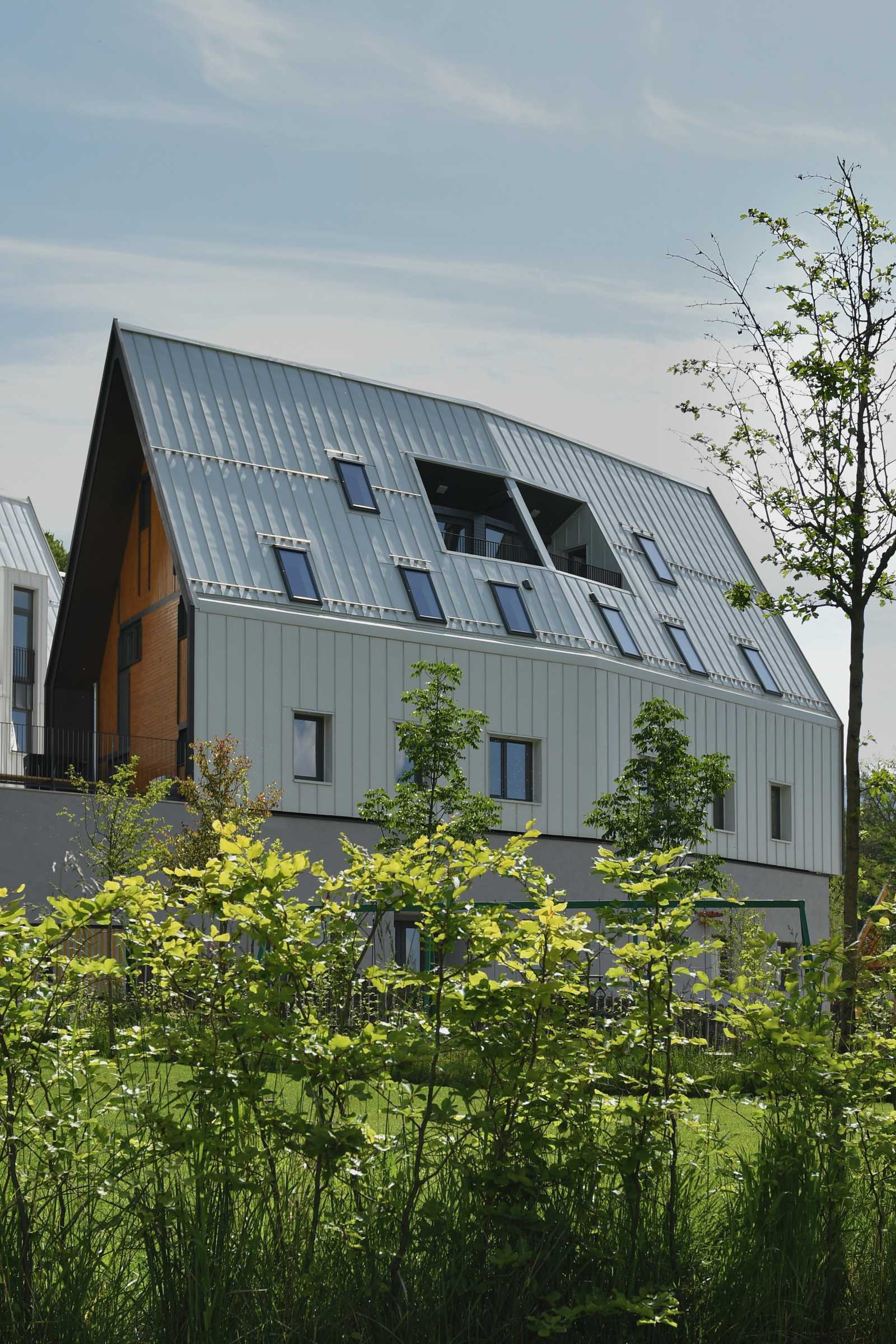
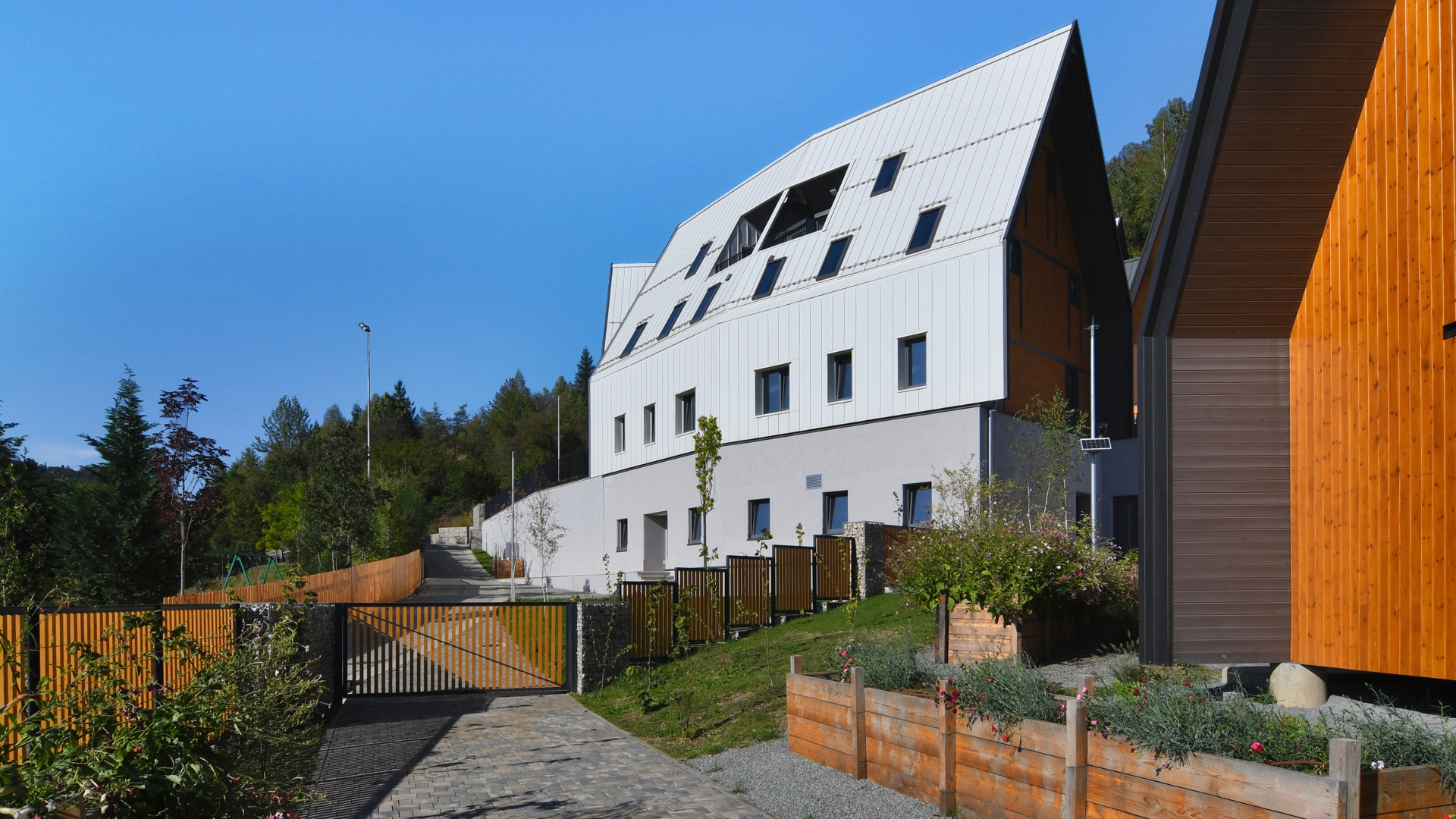
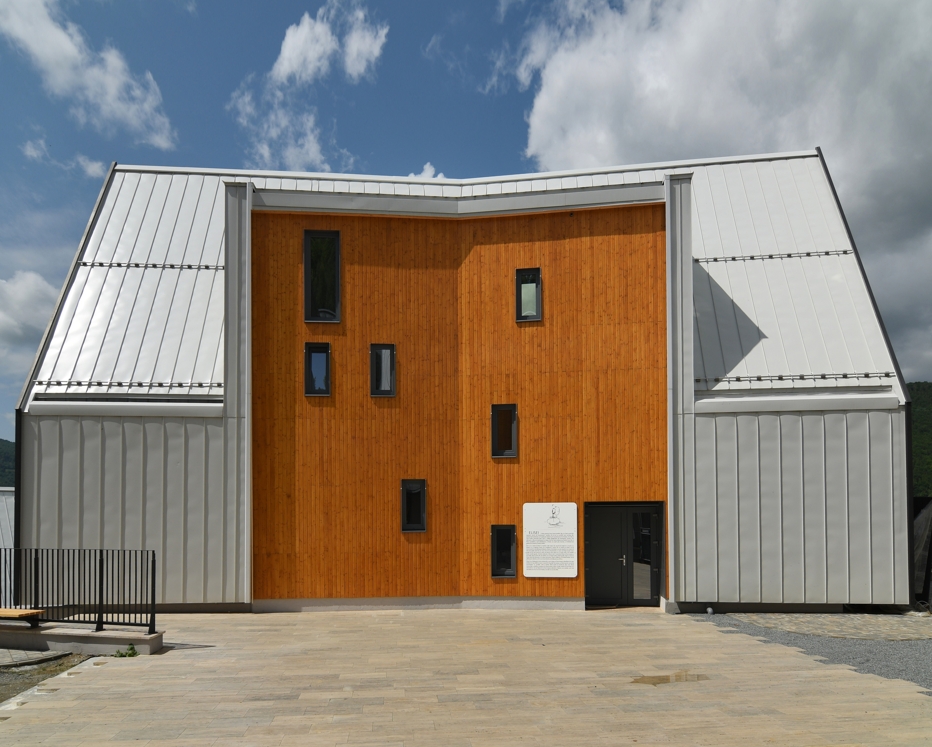
The administrative building, along with the multifunctional one, represents the center of the complex and offers various spaces for community use. They are grouped in such a way that, in addition to the interior space, they also create an exterior space in the form of a courtyard with benches and standing places, greenery, and pedestrian areas designed for gatherings. Compared to the other buildings in the center, the administrative building stands out with a distinctive volumetric and compositional feature. One of its façades, the one facing the multifunctional building, is covered with wood on three levels, with the open book shape serving as the compositional inspiration.
This architectural choice gives the building a distinct character and creates a surprising visual effect, making it stand out from the other buildings in the complex, even though it uses materials and volume dimensions similar to the other constructions in the center. Another distinctive element of the administrative building is its functional layout, which includes three different functions and three separate entrances, each located on different façades. These entrances facilitate access from various directions and allow the interior spaces to be used directly from the outside, both from the basement level and from the ground floor.
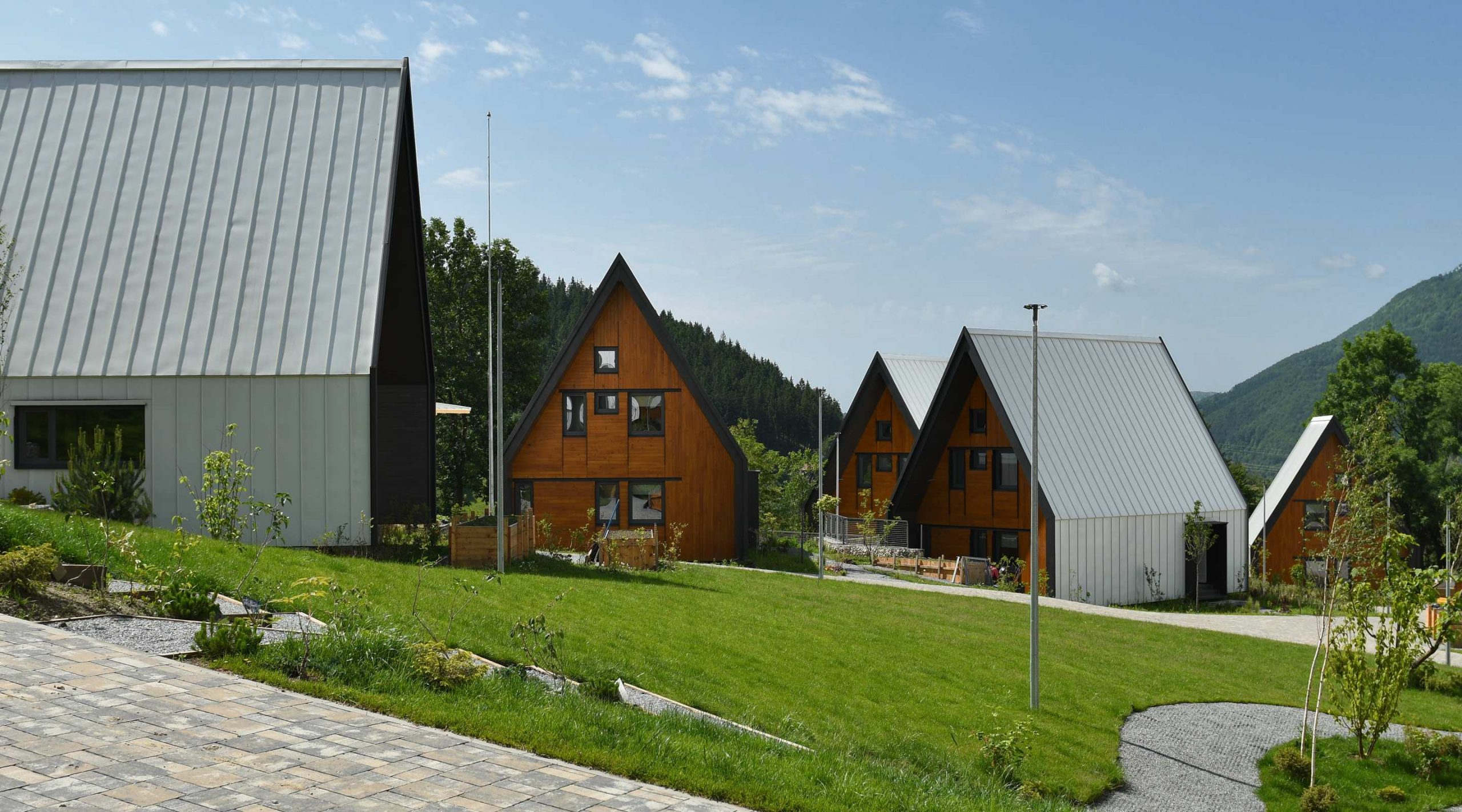
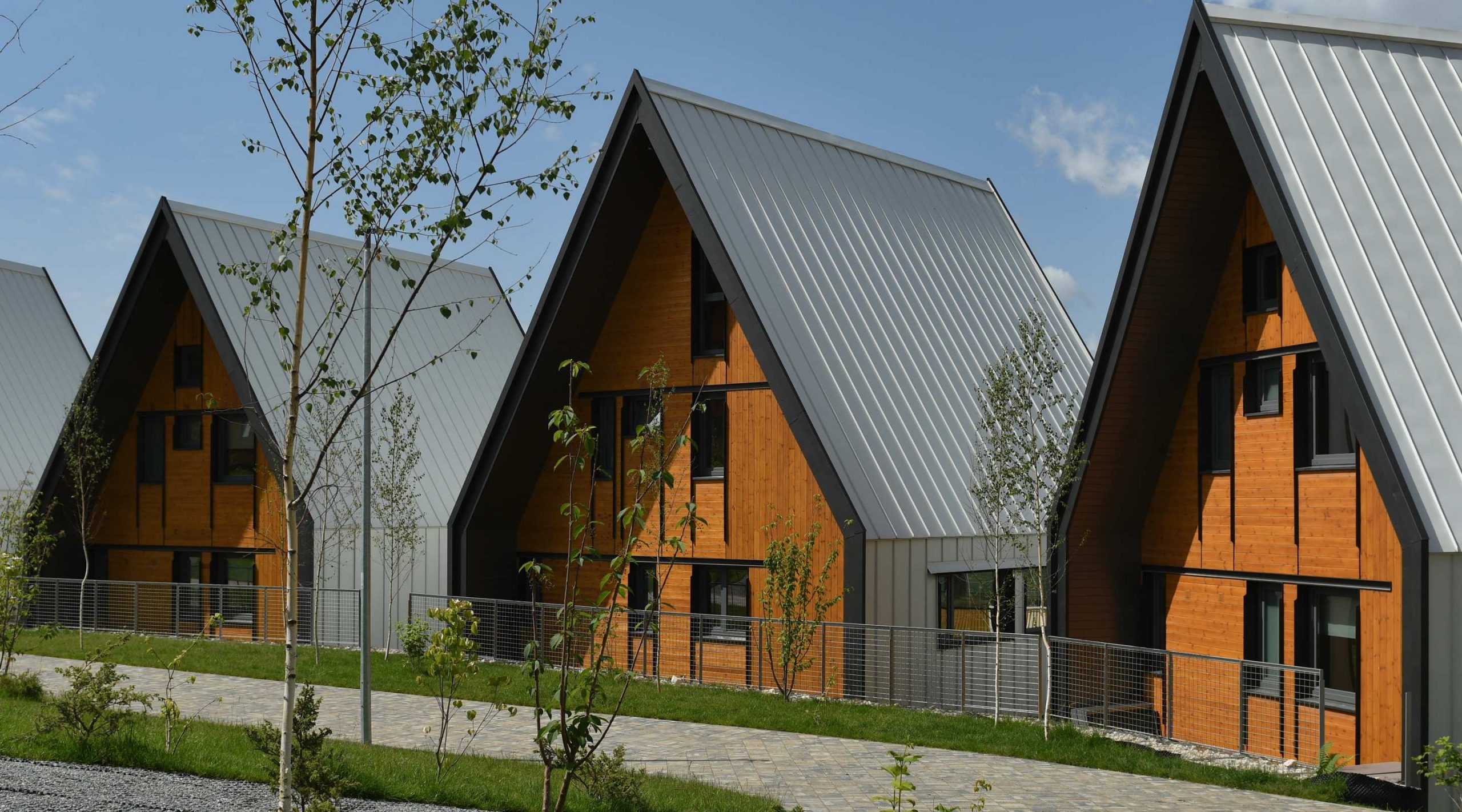
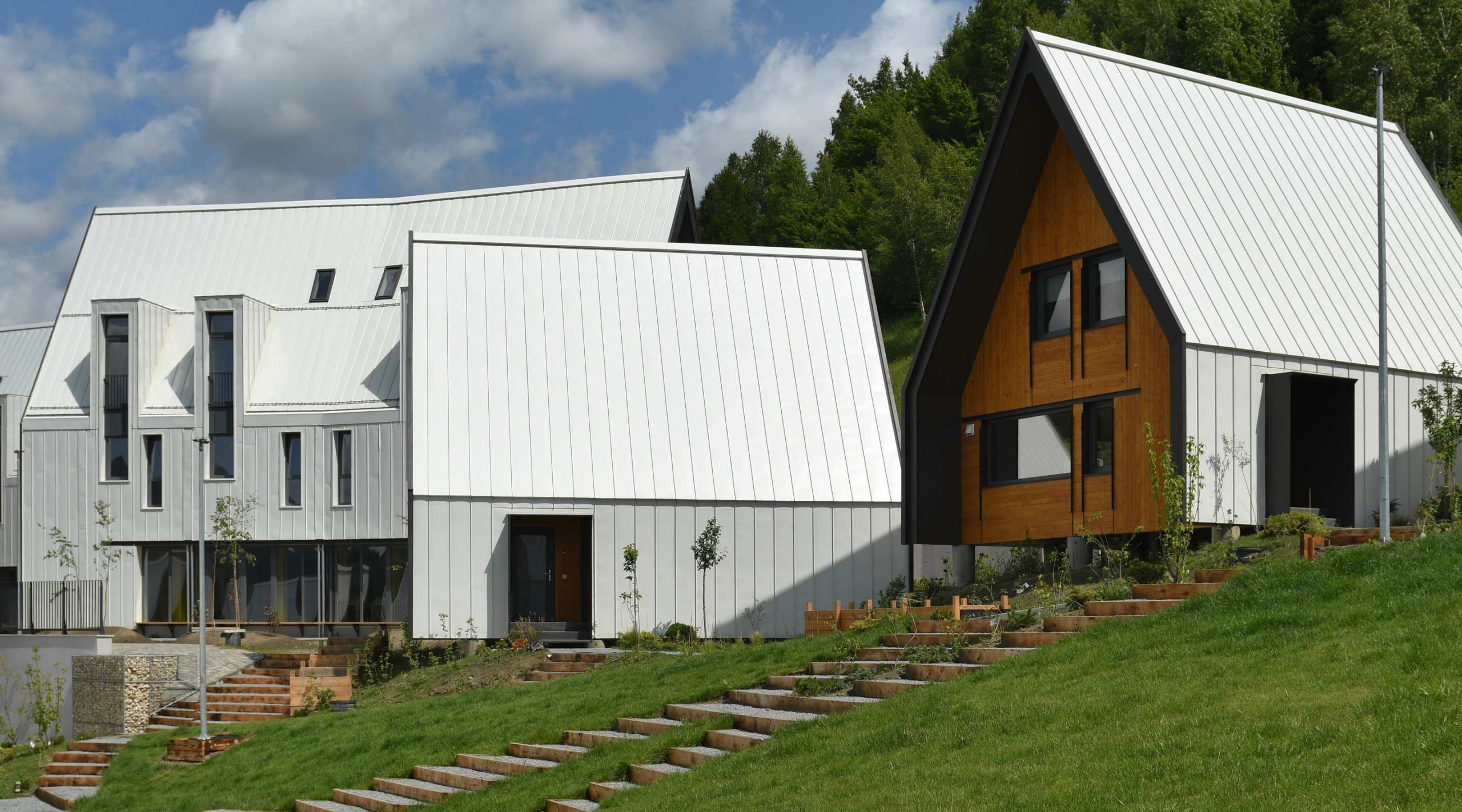
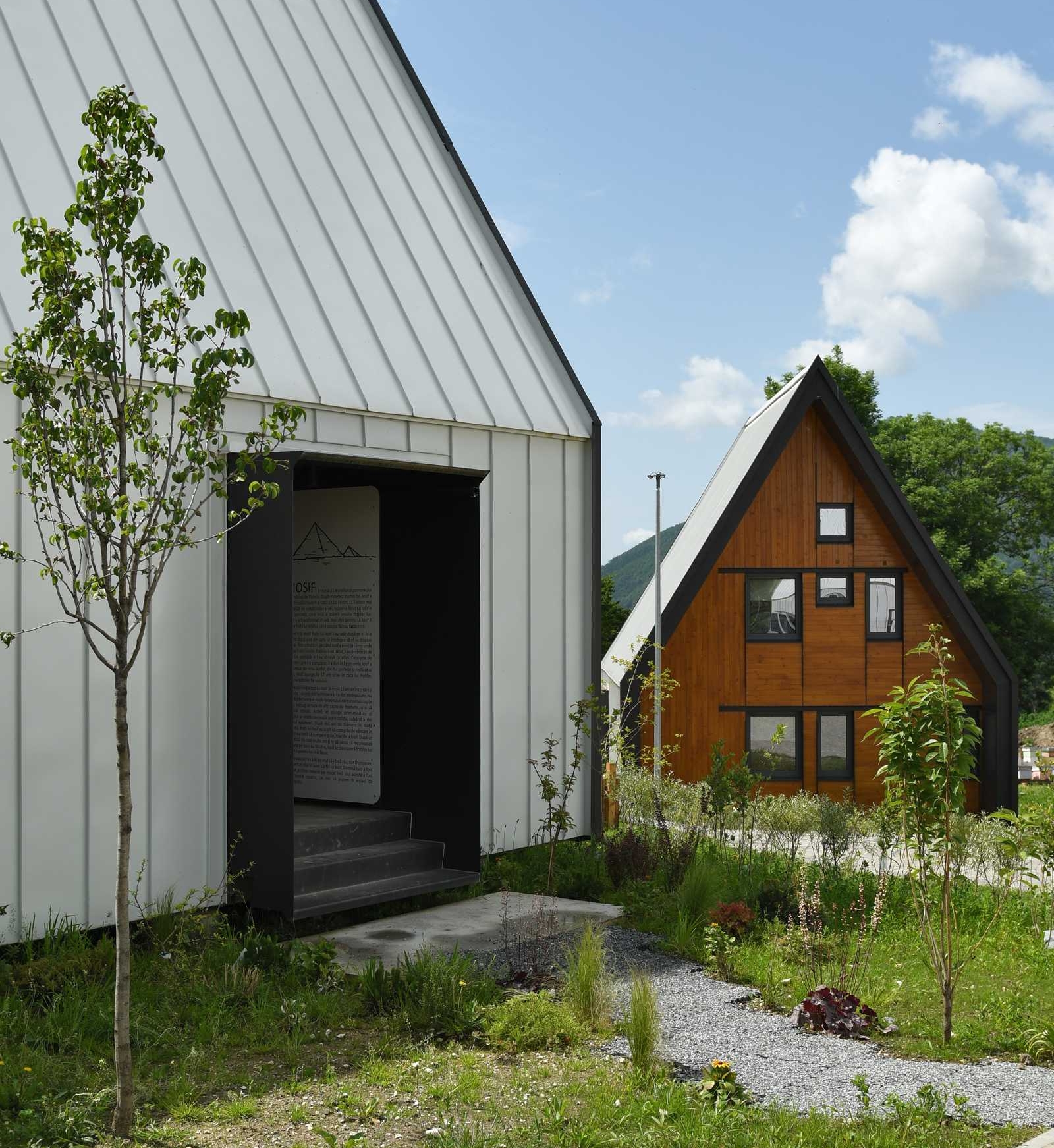
The complex consists of 15 houses scattered around the central pavilion, which blend into the local context, both in terms of volume and materiality.
Each house has a specially designed area for growing vegetables and aromatic plants, enhancing the sense of community responsibility and belonging to the place.
The houses are distinctive in that they are named after biblical figures. Their stories are detailed on a panel at the entrance, not to build them up, but to highlight God’s greatness in their lives and, overall, throughout history.
This profound message at the entrance of each house reminds both children and adults that everyone is welcome, regardless of their personal story, and will be accepted and encouraged in the place they are about to enter—the house. The fifteen stories are about God’s works in the lives of: Joseph, Noah, Abraham, Moses, David, Jacob, Jonah, Isaac, Samuel, Solomon, Luke, Matthew, Cornelius, Daniel, and Joshua.
The stories and corresponding illustrations are engraved on an HPL panel mounted on a sliding rail system, allowing easy access to the hidden storage space behind it for various outdoor items. At the entrances of the multifunctional building, we find stories about: Paul, Gideon, Peter, Tabitha, and, in the administrative area, Elisha.
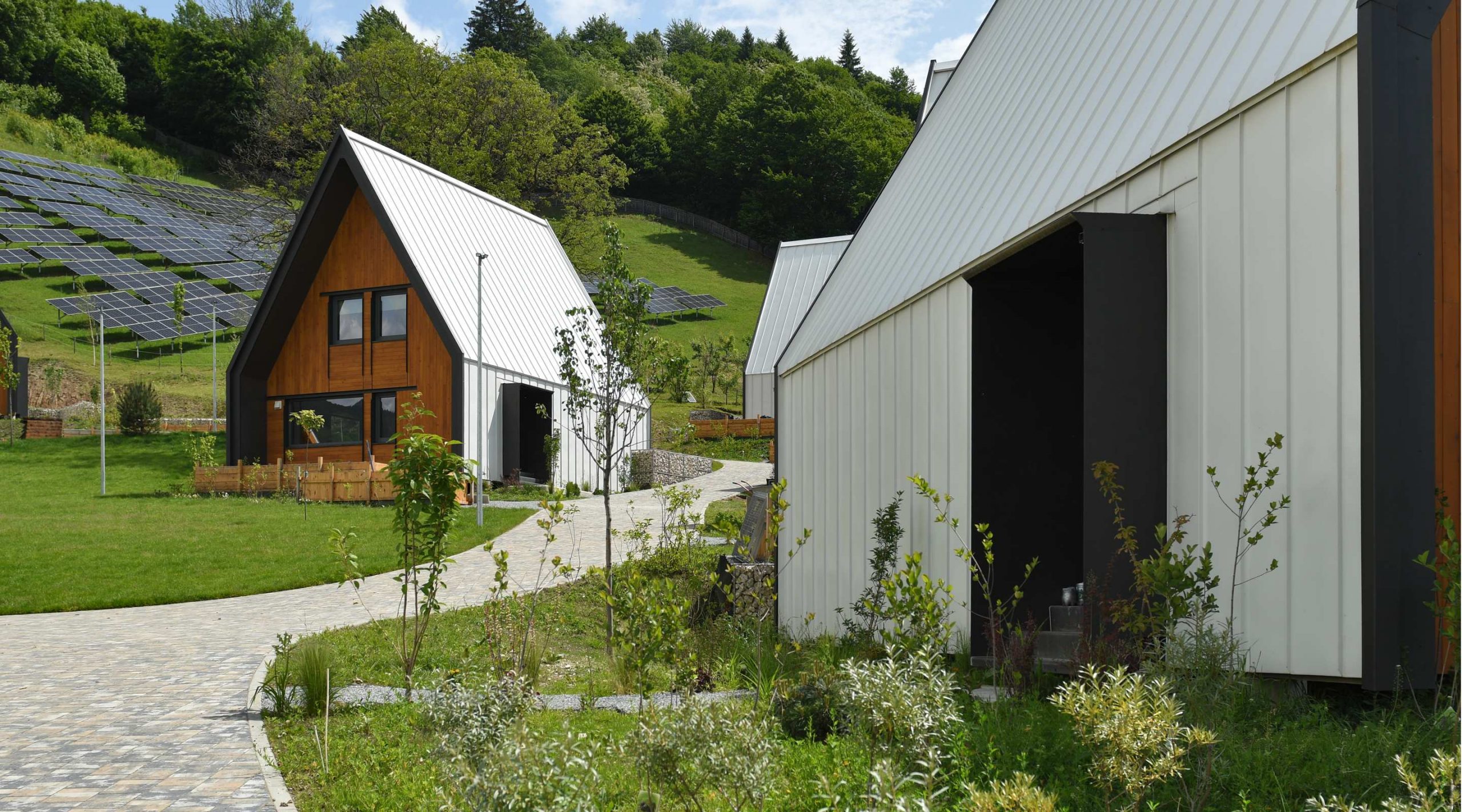
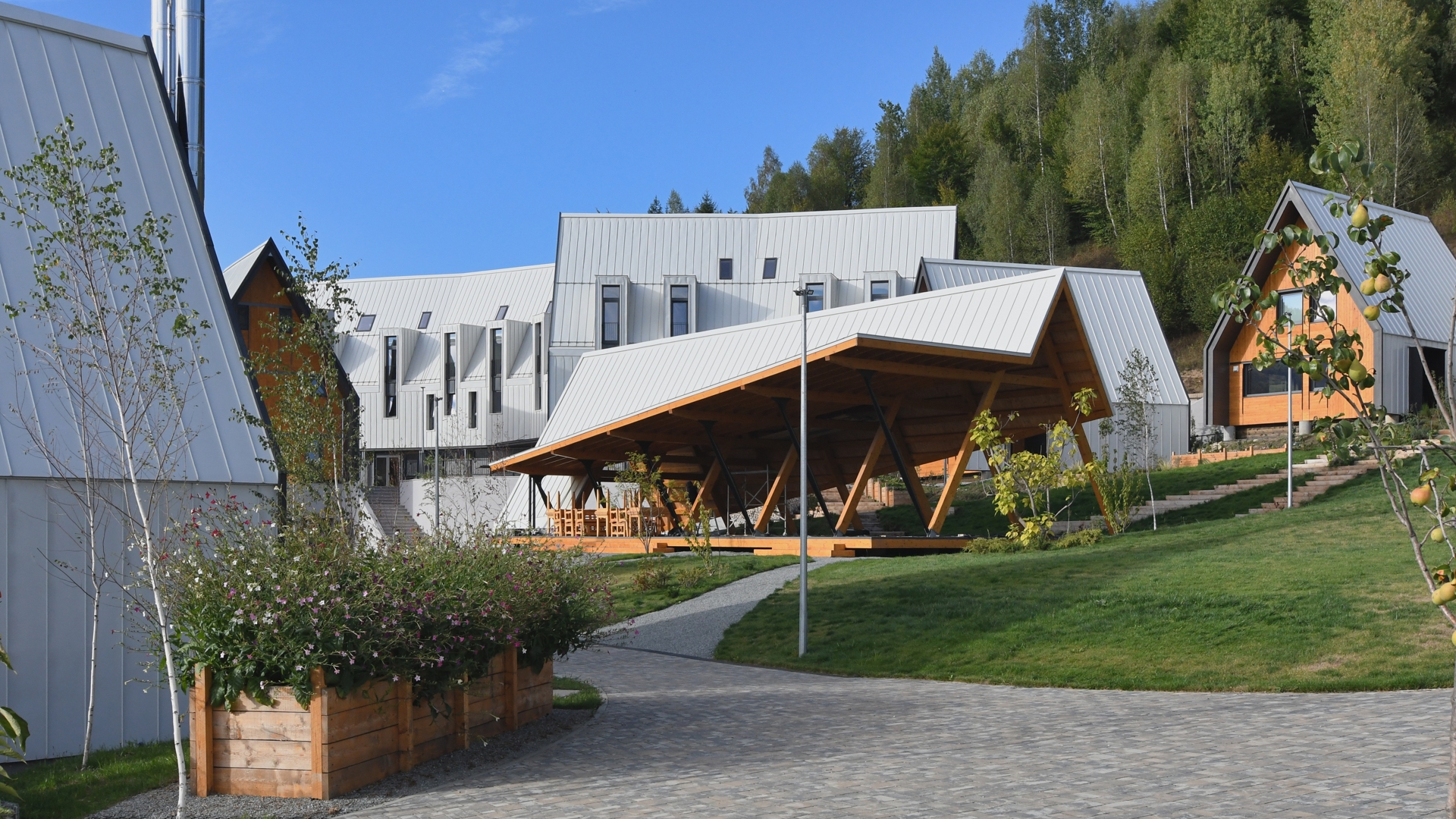
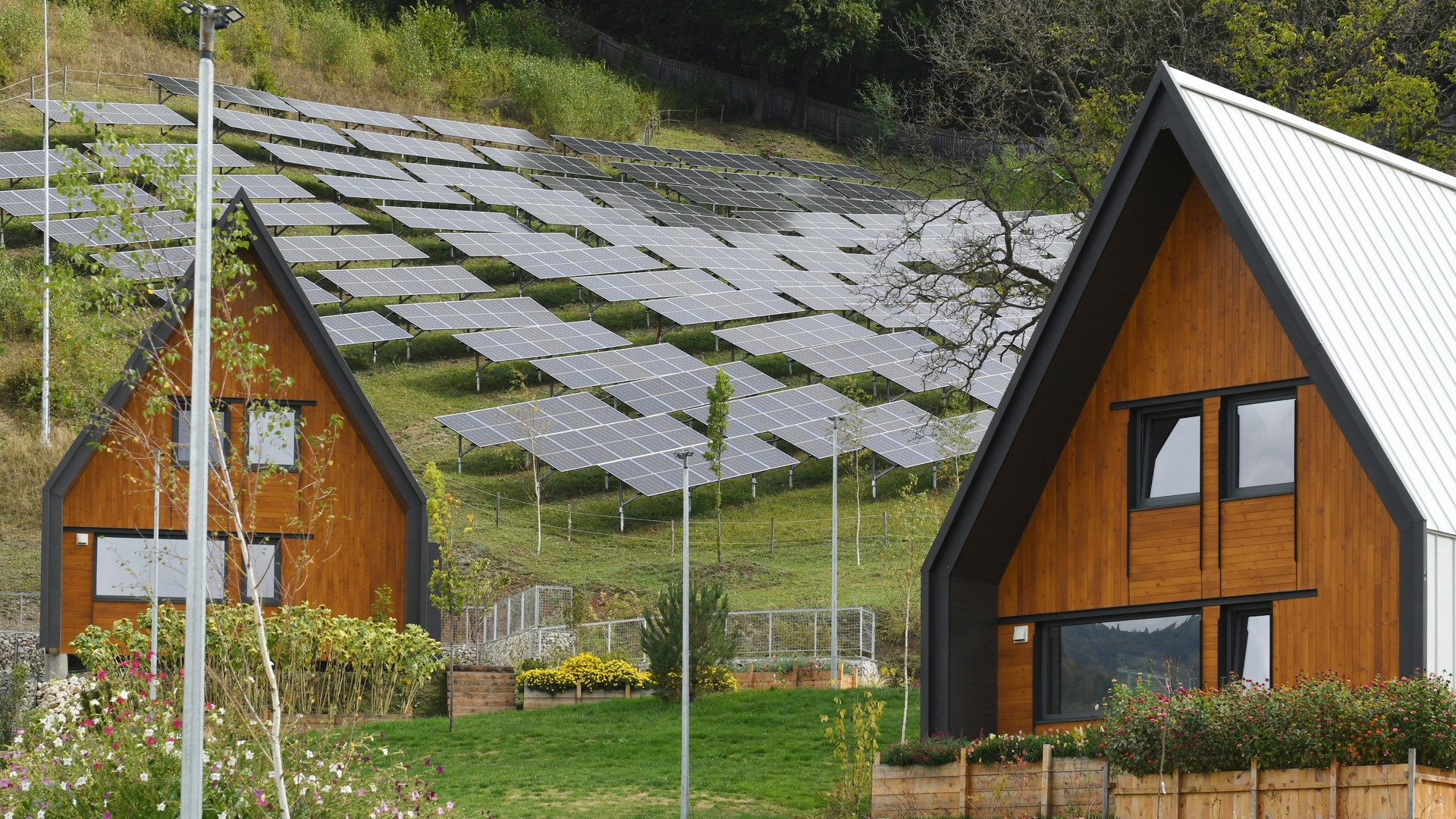
A photovoltaic park with a capacity of 200 kW has been installed in the multifunctional complex, representing a significant investment in renewable energy aimed at reducing carbon emissions and increasing energy efficiency.
This capacity of the photovoltaic park fully covers the energy needs of the center, and any surplus energy is supplied to the national electricity grid.
The chosen location for the photovoltaic park is the south-facing land, which also benefits from the natural slope of the terrain, contributing to optimizing the system’s performance and making efficient use of the available space.
The thermal system for the entire complex is provided by the thermal point, which houses two wood-fired boilers, two heat pumps (located externally), and three 3,000-liter thermal storage tanks.
The design of the thermal point building was chosen to harmonize with the design of the surrounding houses to avoid visual dissonance, especially since it is located between the houses.
The building’s structural framework is made of reinforced concrete frames with brick infill, continuous reinforced concrete foundations, and a wooden roof structure.
The interior space is divided into two distinct areas: the ground floor, which houses the boilers and the wood supply area, and the upper floor, which holds the large-capacity hot water storage tanks. To facilitate the introduction or replacement of these tanks over time, a sliding door was included at the attic level.
